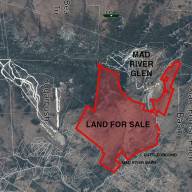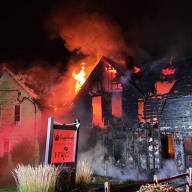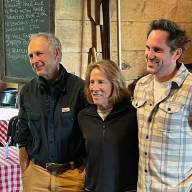Ethan Tapper, the Chittenden County forester for the Vermont Department of Forests Parks and Recreation, shared a plethora of information about forests at the Big Pic Theater in Waitsfield on Thursday, October 19.
In his talk “Ecological Forestry for a Changed and Changing World,” he said that
the forest department was created in the 1940s and that the role of a county forester is to manage both town forests – which he said are increasingly called ‘community forests’ – and to help residents manage forests on their privately-owned land.
Vermont is 75% forested, and 80% of this is privately-owned land. “You don’t need to pass a test, or have a degree – you can just be the owner of these ecosystems,” Tapper said.
County foresters can help people work through questions and issues with their forested land, even visiting residents’ land for site visits. Tapper said that getting information from county foresters is especially important to people in the context of the state’s Use Value Appraisal program, or “Current Use,” as it is commonly known. In this program, landowners can get a tax break if they agree not to subdivide or develop their forested land, and follow a forest management plan created and monitored by their county forester.
Tapper said that he is interested in getting people to reimagine what a forest even is. The key to rethinking this, he said, is in paying close attention to the nuances of forests.
“It’s not just the trees, it’s actually this entire network of all these different organisms. It’s trees, plants, animals, birds, insects, fungi, bacteria, micro-organisms. It’s dead wood, it’s natural disasters, things that make forests change,” he mused.
“A forest is a process,” Tapper said, “which can’t exist without all these interacting pieces and parts.”
Thinking about forests as complex networks, he said, can raise questions about what makes them ‘work,’ what species they are made of, how they change over time and respond to massive disturbances. Essentially, Tapper advised attendees of his talk to notice the unexpected and complex ways that forests move and shift.
He spoke in length about healthy forests as ‘messy.’ He said that most people think of healthy forests with evenly spaced trees and clear grounds. “But that’s based on us and our own sense of aesthetics,” he said.
“We’re not born with a sense of what a healthy forest looks like – we have to develop it. And developing it can actually be uncomfortable, because healthy forests are messy,” Tapper said. This means they are difficult to walk through and see through, with fallen trees, uneven canopies and decay.
“Dead wood is one of my favorite things,” he said, because these logs “are the legacies, and signs, and symptoms of mortality.” He shared that dead wood has four times the biomass of a living tree.
Tapper also spoke in length about the history of forested land in Vermont. He said that historically, 90 to 95 % of the state was forested before agriculture shaped the landscape in dramatic ways.
Those changes aligned with colonization, he said. For example, in the early 19th century, a Portuguese colonizer brought in Merino sheep from Spain – “a kind of gold rush,” he said. “And in the following 20 years, everybody lost their minds, because in the length of a single human generation, 80% of Vermont was converted into sheep pasture.”
Tapper said that the clearing of forests also created a dramatic shift in the landscape, as Europeans needed wood for fences, smelting iron, building railroads and for boiling maple sap. They were using seven million cords per year, he said.
Since there was so much forested land, “the colonists thought the wood here was inexhaustible,” he explained. Yet, they cleared much of the forests and ran out by the late 1800s, which had a profound impact on wildlife – caribou, moose, wolves, catamounts and a now-extinct species of elk.
“Beavers were also an incredible influence on our landscape,” Tapper said, adding that there was one beaver dam for every two acres in Vermont's valleys, which disturbed the forests with falling trees and flooding. Beaver trapping during colonization reduced their population drastically, but they were reintroduced to the state in 1921.
Other species that were introduced after colonial-era forest clearing included deer in the 19th century, turkeys in the 1950s and 60s, and fisher cats who were brought from Wisconsin after the porcupine population exploded and “porcupines caused all this mischief.”
Tapper said some of Vermont’s folklore includes stories about how people could exchange a pair of porcupine ears to the town clerk for a payment, after hunting them.
Tapper said that today, Vermont forests are “younger and simpler” – the vast majority of them “like adolescents or children.” But eventually, he said, they will be incredibly diverse and complex processes.













